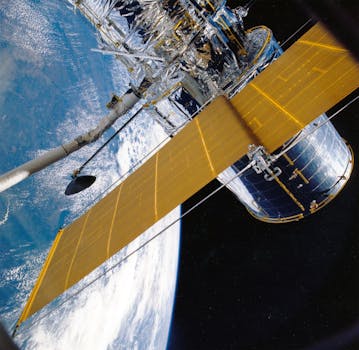Connecting the Globe: The Impact of Orbital Technology on Global Communication

Connecting the Globe: The Impact of Orbital Technology on Global Communication
Orbital technology has revolutionized the way we communicate globally, providing faster and more reliable connections. Orbital technology, also known as satellite communication, uses artificial satellites in orbit around the Earth to transmit and receive data, voice, and video signals. This technology has bridged the gap between remote and underserved communities, enabling them to access the global network and connect with the rest of the world.
The impact of orbital technology on global communication has been significant. With the launch of the first commercial satellite, Intelsat 1, in 1965, the world witnessed a new era of global communication. Since then, the number of satellites in orbit has increased exponentially, providing a wide range of services, including television broadcasting, telecommunications, and navigation. Orbital technology has enabled the transmission of data, voice, and video signals over long distances, connecting people and businesses across the globe.
The Benefits of Orbital Technology
Orbital technology has several benefits that have made it an essential part of modern communication. One of the primary advantages of orbital technology is its ability to provide connectivity to remote and underserved areas. Many parts of the world lack the infrastructure to support traditional communication systems, such as fiber optic cables or cell towers. Orbital technology has filled this gap, enabling people in these areas to access the global network and connect with the rest of the world.
Another significant benefit of orbital technology is its reliability. Satellite communication systems are less prone to outages and disruptions compared to traditional communication systems. This is because satellites are in orbit around the Earth, and their signals are not affected by natural disasters, such as earthquakes or hurricanes, or human-made disruptions, such as cyberattacks.
The Future of Orbital Technology
The future of orbital technology looks promising, with several new developments and innovations on the horizon. One of the most significant advancements is the launch of low-Earth orbit (LEO) satellites. LEO satellites are a new generation of satellites that operate at an altitude of around 1,200 kilometers, which is much lower than traditional satellites. This lower altitude enables LEO satellites to provide faster and more reliable connections, with lower latency and higher bandwidth.
Another exciting development in orbital technology is the use of constellations of small satellites. These constellations, such as those being launched by companies like SpaceX and OneWeb, consist of hundreds or even thousands of small satellites that work together to provide global coverage. This approach enables the provision of high-speed, low-latency connections to even the most remote areas of the world.
Conclusion
In conclusion, orbital technology has had a profound impact on global communication, providing faster and more reliable connections to people and businesses around the world. The benefits of orbital technology, including its ability to provide connectivity to remote and underserved areas and its reliability, have made it an essential part of modern communication. As the technology continues to evolve, with the launch of LEO satellites and constellations of small satellites, we can expect to see even more significant advancements in global communication.